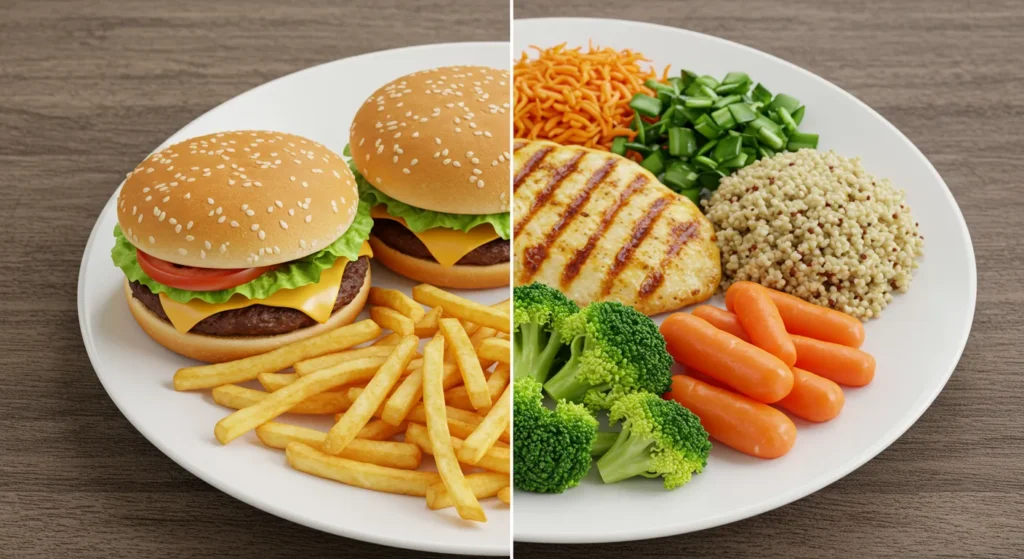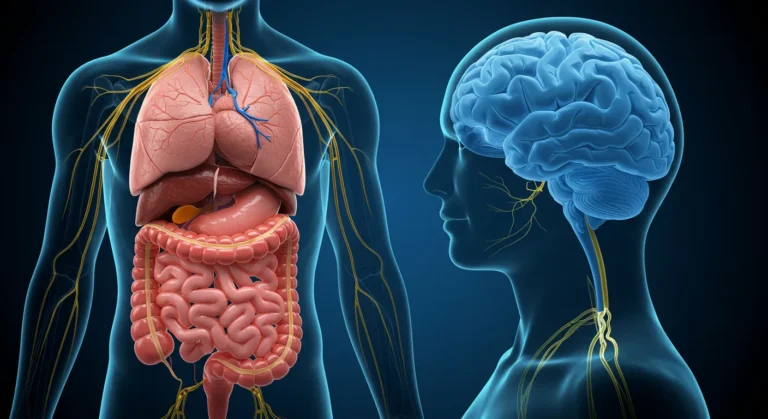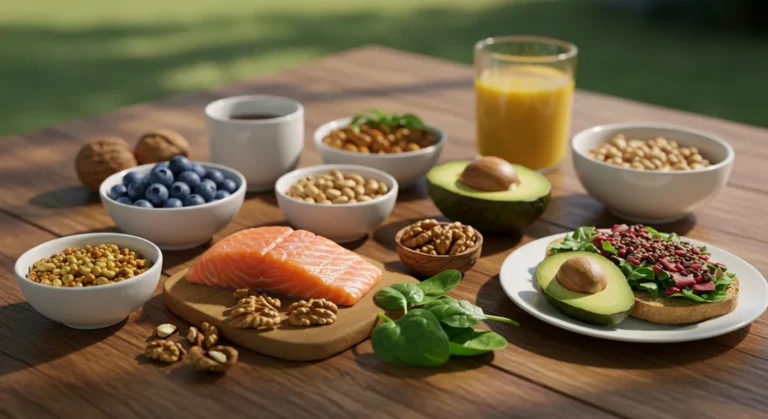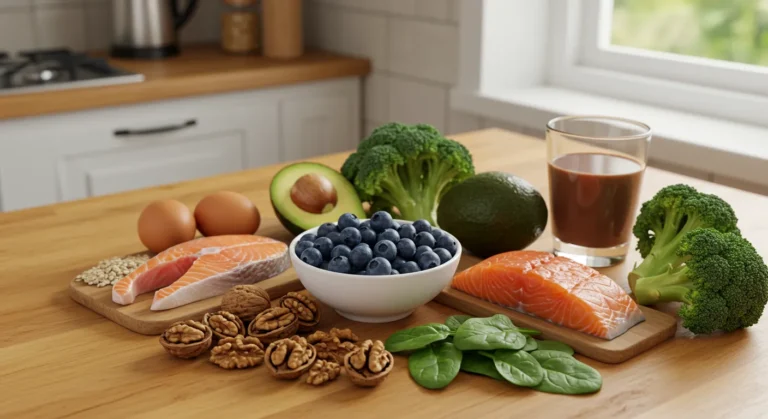Healthy Eating Habits: The Anti-Perfectionist Guide to Actually Eating Well

Here’s the truth nobody wants to admit: I’ve probably started “eating healthy” about 47 times in my adult life.
January 1st rolls around, and suddenly I’m meal-prepping quinoa bowls like I’m training for the Olympics. By February 15th, I’m stress-eating leftover Valentine’s chocolate while googling “is it too late to start eating better?”
Sound familiar?
The problem isn’t that we don’t know vegetables are good for us or that processed food isn’t ideal. The problem is we’ve been taught that healthy eating habits require monk-like discipline and Pinterest-worthy meal prep skills.
What if I told you that’s complete nonsense?
Why Most “Healthy Eating” Advice Is Broken
Let me guess—you’ve been told to:
- Eliminate entire food groups
- Count every calorie
- Meal prep for 6 hours every Sunday
- Never eat anything fun again
No wonder most of us give up before we even start.
Here’s what nobody mentions: sustainable healthy eating isn’t about perfection—it’s about building better defaults. It’s the difference between white-knuckling through a restrictive diet and casually making choices that happen to be good for you.
The Myths That Keep Us Stuck
“Clean eating means expensive superfoods” Listen, I love a good açai bowl as much as the next person, but you don’t need to spend your rent money at Whole Foods to eat well. Frozen spinach, canned beans, and regular old carrots work just fine.
“You have to meal prep like a professional chef” Instagram has convinced us that healthy eating requires matching glass containers and perfectly portioned meals. Reality check: scrambled eggs with leftover vegetables is a perfectly nutritious meal, even if it doesn’t photograph well.
“One bad meal ruins everything” This all-or-nothing thinking is what kills most attempts at better eating. Had pizza for lunch? Great—that has nothing to do with what you choose for dinner.
The Real Rules of Healthy Eating (That Don’t Suck)
After years of trial and error (emphasis on error), here’s what actually works:
Start Ridiculously Small
I used to try changing everything at once. New workout routine, completely overhauled diet, meditation practice—the whole shebang. Guess how long that lasted?
Instead, pick one tiny change. Maybe it’s adding spinach to your morning smoothie or swapping your afternoon soda for sparkling water. That’s it. Do that for two weeks before even thinking about the next change.
Why this works: Your brain loves familiar patterns. Trying to change everything at once triggers your internal alarm system. But one small change? That’s manageable.
The Plate Math That Actually Makes Sense
Forget counting calories or measuring portions with a food scale. Here’s the simplest approach I’ve found:
Half your plate = vegetables (frozen counts, roasted is even better) Quarter of your plate = protein (beans, eggs, chicken, tofu—whatever works) Quarter of your plate = smart carbs (brown rice, quinoa, sweet potatoes) Plus a thumb-sized portion of healthy fats (avocado, nuts, olive oil)
This isn’t rocket science, and it doesn’t require a nutrition degree to execute.
Protein and Fiber Are Your Best Friends
Want to know the secret to feeling satisfied after meals and avoiding that 3 PM energy crash? Protein and fiber.
Most people get enough carbs and fat without trying, but protein and fiber require a bit more intention. Every meal should have both.
Easy protein wins:
- Greek yogurt with breakfast
- Handful of nuts as a snack
- Beans in your salad
- Eggs pretty much anywhere
Fiber champions:
- Berries (fresh or frozen)
- Beans and lentils
- Vegetables (shocking, I know)
- Whole grains when you eat grains
Snacking Strategy That Won’t Derail You
The wrong snacks will leave you hangry and reaching for whatever’s convenient. The right snacks keep your energy stable and your brain happy.
High-protein snacks that actually taste good:
- Apple slices with almond butter
- Hard-boiled eggs (prep a bunch at once)
- Greek yogurt with berries
- Hummus with vegetables
- A handful of mixed nuts
Brain food snacks for when you need to think:
- Blueberries (nature’s brain candy)
- Walnuts (omega-3 powerhouses)
- Dark chocolate (yes, really—in moderation)
Meal Prep Without the Sunday Marathon
Traditional meal prep advice suggests spending your entire weekend cooking. Who has time for that?
Here’s my lazy person’s approach:
- Cook once, eat multiple ways. Roast a big batch of vegetables, then use them in grain bowls, omelets, and wraps throughout the week.
- Invest in good storage. Glass containers make leftovers feel less sad.
- Embrace repetition. Having the same healthy breakfast every day isn’t boring—it’s one less decision to make.
Hydration Counts as Nutrition
I spent years wondering why I felt sluggish, only to realize I was chronically dehydrated. Sometimes when you think you’re hungry, you’re actually thirsty.
Simple hydration wins:
- Start your day with water before coffee
- Keep a water bottle visible at your desk
- Herbal teas count
- Add lemon or cucumber if plain water bores you
The Foods That Actually Move the Needle
You don’t need to memorize the glycemic index or understand the difference between omega-3 and omega-6 fatty acids. But there are some foods that consistently show up in research as genuinely beneficial:
Brain Foods That Aren’t Overhyped
Fatty fish like salmon and sardines (omega-3s for brain function) Blueberries (antioxidants that may improve memory) Leafy greens (folate and other nutrients that support cognitive health) Nuts and seeds (vitamin E and healthy fats) Eggs (choline for brain development and function)
Gut Health Heroes
Your digestive system affects everything from your immune system to your mood. These foods help maintain a healthy gut:
Fermented foods like yogurt, kefir, sauerkraut, and kimchi Fiber-rich foods that feed beneficial bacteria Bone broth (if you’re not vegetarian) Prebiotic foods like garlic, onions, and bananas
Anti-Inflammatory All-Stars
Chronic inflammation is linked to pretty much every health problem you want to avoid. These foods help keep inflammation in check:
Fatty fish (sensing a theme here?) Colorful vegetables (the pigments that make them colorful are often anti-inflammatory) Turmeric (especially with black pepper to increase absorption) Green tea (when you need a coffee break)
When Supplements Actually Make Sense
I’m generally skeptical of supplements—food should be your primary source of nutrition. But there are a few that make sense for most people:
- Vitamin D (especially if you live somewhere with limited sunlight)
- Omega-3s (if you don’t eat fish regularly)
- B12 (particularly important for vegetarians and vegans)
- Magnesium (many people are deficient and don’t realize it)
Always talk to a healthcare provider before starting new supplements, especially if you take medications.
Tools That Actually Help (Without Breaking the Bank)
You don’t need a kitchen full of gadgets, but a few key tools make healthy eating easier:
- A good blender for smoothies and soups
- Glass storage containers for leftovers and meal components
- A sharp knife (seriously, cooking is so much easier with a decent knife)
- A large sheet pan for roasting vegetables
The Mindful Eating Thing (Without the Woo-Woo)
Mindful eating doesn’t mean meditating over your meals or chewing each bite 30 times. It just means paying attention.
Practical mindful eating:
- Sit down when you eat (revolutionary, I know)
- Put your phone away during meals
- Notice when you’re actually full
- Don’t eat while doing other tasks
This isn’t about being precious about food—it’s about giving your brain a chance to register what you’re eating and how it makes you feel.
What to Do When Life Gets Messy
Here’s the reality: there will be weeks when everything goes wrong, you’re stressed, and frozen pizza becomes a food group. That’s not a character flaw—that’s being human.
Damage control strategies:
- Keep easy healthy options on hand (frozen vegetables, canned beans, nuts)
- Don’t let one imperfect day turn into an imperfect week
- Focus on getting back to your habits, not on “making up” for anything
The 80/20 approach: If 80% of your eating supports your health and energy, the other 20% can be whatever you want without guilt.
Building Habits That Stick
The secret to lasting change isn’t willpower—it’s systems. Instead of relying on motivation (which comes and goes), create environments that make healthy choices easier.
Environmental design wins:
- Keep fruit visible on the counter
- Pre-cut vegetables when you get home from grocery shopping
- Put healthy snacks at eye level in your fridge
- Make processed foods less convenient (not forbidden, just less convenient)
The Real Measure of Success
Stop measuring success by the number on the scale or how perfectly you followed some arbitrary rules. Instead, ask yourself:
- Do I have more consistent energy throughout the day?
- Am I sleeping better?
- Do I feel good after meals instead of sluggish?
- Are my mood swings less dramatic?
- Am I getting sick less often?
These changes happen gradually and are way more important than fitting into old jeans (though that might happen too).
Start Where You Are, Not Where You Think You Should Be
Eating healthy doesn’t have to mean giving up everything you love. The best eating plan is the one you’ll actually follow. If you currently eat fast food every day, switching to perfectly balanced, home-cooked meals overnight isn’t realistic. But adding a side salad to your usual lunch order? That’s doable.
This week, try one thing:
- Add vegetables to one meal per day
- Replace one sugary drink with water
- Include protein with breakfast
- Take your lunch break away from your desk
That’s it. No complete lifestyle overhaul required.
Your relationship with food doesn’t have to be complicated or stressful. Small, consistent changes compound over time into significant improvements in how you feel and function.
The goal isn’t perfection—it’s progress. And progress looks different for everyone.
It’s about shifting your daily defaults—little by little. Your energy, digestion, brain clarity, and skin will thank you. So will your future self.
Ready to simplify your wellness routine? Check out our other practical guides on biohacking your energy, gut health, and more.
Disclaimer: The information provided is for educational purposes only, not a substitute for professional medical advice. Always consult a healthcare professional.




